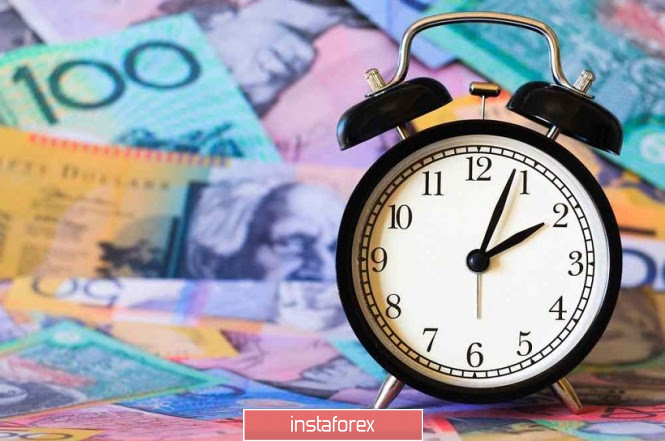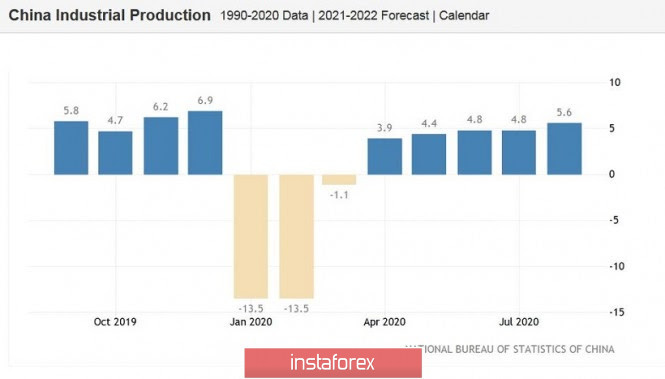The Australian dollar is again storming the 73rd figure. The minutes of the last Reserve Bank of Australia (RBA) meeting, which were published during the Asian session, turned out to be in favor of the Aussies. While the greenback is again losing its position throughout the market, the us dollar index is declining to the base of the flat corridor within which the indicator has been fluctuating for a month and a half. At the moment, the index is at 92.90, whereas a day ago it was within the 93rd figure, trading in the target area of 93.30. In other words, the US currency is again showing weakness but it is within the one-and-a-half-month range, and the Australian dollar has received an "independent" reason for its growth.

The Reserve Bank of Australia minutes did not tell anything new but the fact is that the regulator has once again demonstrated its commitment to a wait-and-see position and at the same time, maintained an optimistic attitude. The main message of the RBA's minutes is that the central bank will not raise interest rates until " progress is made towards full employment and inflation." That is, on the one hand, the bank "froze" the issue of tightening monetary policy for quite a long time; given the current increase in unemployment in Australia and the weak rate of recovery in inflation. On the other hand, the regulator actually ruled out the option of further interest rate cuts. It was this factor that became the main "driving force" for them. There are no temporary guidelines here. The policy will remain accommodative "as long as necessary". At the same time, the RBA members did not rule out the possibility of using other measures to support the economy. For example, if necessary, the central bank will increase the volume of purchases of government bonds or continue the validity of this program.
In "pre-crisis" times, the above remark would have put pressure on the Australian dollar. The overall recovery of national economies is at the forefront so the relevant programs of central bank are positively perceived by market participants.
The other theses of the published protocols were optimistic. For example, the RBA members once again noted that the downturn in the economy was "not as severe as previously expected" and that the recovery is "well underway in most of Australia.". At the same time, the central bank noted that the recovery process "is likely to be uneven since the COVID-19 outbreak in Victoria "has had a serious impact on the economy.".
It should be noted that the September meeting of the RBA was held 2 weeks ago so the central bank members operated with the figures that were relevant at that time including the dynamics of the spread of Coronavirus in the country. To date, we can conclude that the COVID-19 situation in the country has significantly improved, including in the "problematic" state of Victoria. If a month ago, the daily increase in infected people was estimated in the hundreds, then over the past day in the seven-million-strong state, less than 40 cases were registered. The dynamics are clearly downward, which has allowed local authorities to relax quarantine restrictions.
Thus, the RBA protocol completely offset the concerns of market participants about the possible easing of monetary policy parameters. Such concerns emerged after the release of extremely weak inflation data and mixed data on labor market growth but the regulator decided to take a wait-and-see approach.
Additional support for the Australian dollar was provided today by Chinese data. Thus, the volume of industrial production in August increased by 5.6% in annual terms. This is the strongest growth rate since December 2019. At the same time, experts expected to see this indicator much lower, at 4.9%. Therefore, the result, as they say, exceeded all expectations. The volume of investments in fixed assets has also increased. This indicator, which demonstrates the dynamics of long-term investment activity in the country, was also released in the "green zone". Despite the smoldering political conflict between Canberra and Beijing, China remains Australia's main and largest trading partner so the growth of Chinese indicators has a positive effect on the "health" of the Australian currency.

Thus, the AUD/USD pair retains its growth potential from the point of view of technology. On the daily chart, the Ichimoku indicator has formed a bullish signal which indicates the priority of long positions. The main goal of the upward movement is the 0.7390 mark.
At the same time, it should be noted that the day after tomorrow – that is, on Thursday – key data on labor market growth will be published in Australia. According to general forecasts, they will reflect a negative trend (an increase in unemployment to almost 8% and a decrease in the number of employees by 40 thousand). Therefore, on the eve of this release, it is better to close long positions, since the published figures can turn the AUD/USD pair 180 degrees.
 English
English 
 Русский
Русский Bahasa Indonesia
Bahasa Indonesia Bahasa Malay
Bahasa Malay ไทย
ไทย Español
Español Deutsch
Deutsch Български
Български Français
Français Tiếng Việt
Tiếng Việt 中文
中文 বাংলা
বাংলা हिन्दी
हिन्दी Čeština
Čeština Українська
Українська Română
Română

